Ojai's Cluff Vista Park
Created 19 January 2006
This page last updated 4 Febuary 2009
There is a small, special park in downtown Ojai: Cluff Vista Park. This little triangle-shaped park is unique in every way. The plants in this park are almost entirely plants native to the Ojai Valley and surrounding mountains, with a few native to further reaches of California, and only two species that are not native to California.
The land on which this park sits had been vacant for nearly a decade, formerly the site of Adamson's Shell gas station. The underground fuel tanks under the station's gasoline tanks had leaked for years, contaminating the soil, and threatening to also contaminate the groundwater aquifer, which is used for domestic purposes. The gas station was closed and torn down, and the soil began a long, slow remediation process to reduce the contamination to acceptable levels. But the land was vacant, with a chainlink fence around it, and not at all attractive. Longer ago, a row of small cottages lined the east side of Rincon Street, behind Adamson's Shell. Those were torn down years before the gas station was razed.
It was decided in 2001 by a number of Ojai citizens, including Shiela and Don Cluff and leaders of the Ojai Valley Land Conservancy and city council, that this small piece of property would be a good spot for a little park, and the seed was planted. Money was raised, designs drawn, plant palettes made, and decisions made, led by the Ojai Valley Land Conservancy. The community came forth with money donated to the cause, the city worked to purchase the property, and the plans sprouted. Bostrom & Associates with Van Atta Associates landscape architects designed the new park. I provided a long list of plants indigenous to the Ojai Valley and surrounding mountains, and the park took shape on paper and in the minds of the designers. With the final design selected, Orion Landscaping won the contract to install the landscaping, and they continue to maintain the park. A dedication ceremony was held in 2002, with the whole town turning out, and now, we have this wonderful park, named in honor of the most generous donors, the Cluffs.
The park has several garden themes and landscape aspects, including a butterfly garden, a riparian (streamside) landscape, a sage-scented garden, a grass meadow, and other themed gardens; seven gardens in all. There is also a Discovery Trail, Donor Plaza, and the two trellised paths. The park has two fountains, symbolizing the sun and the moon, connected by an ephemeral stream.
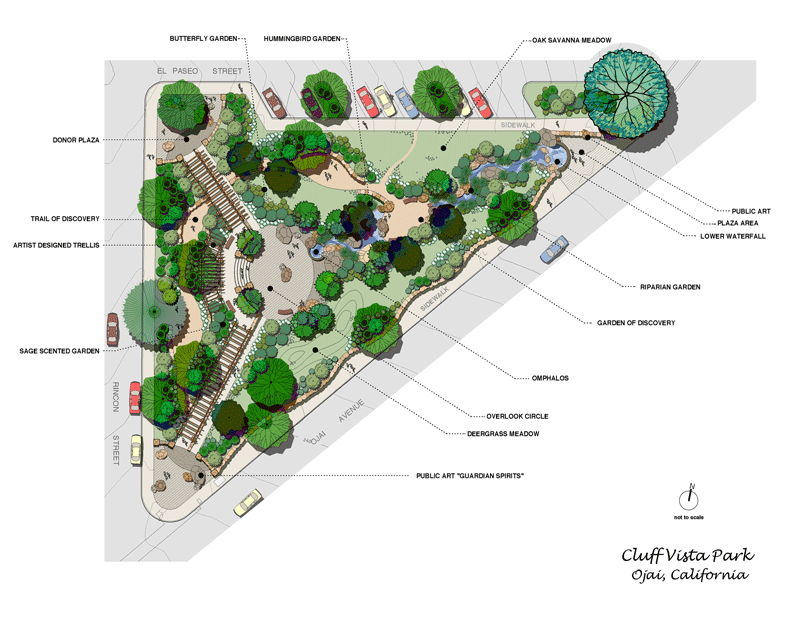
This webpage provides some photographs of what this park looks like today, in November 2005 and January 2006, and provides a good overview of the features of this unique park. However, it is so much better to visit the park in person, where you can touch, and smell the fragrances of each plant, to watch the butterflies and hummingbirds feed on the nectar of the wildflowers, to listen to the water of the two fountains, and to stroll along the various meandering paths that link the various themed gardens together. You will also find native wildlife tracks in the walkways and path borders.
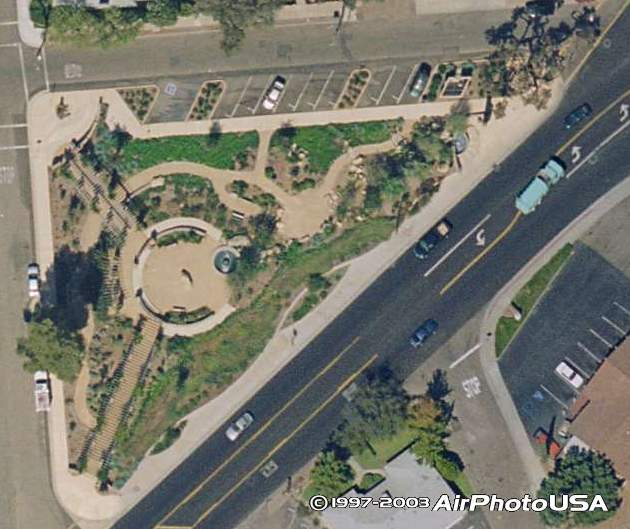
And as a little game, see if you can find one major difference with the park design with how it actually is. Hint: look not within but on the periphery to see it more clearly, and none of the photos show this clearly. To improve your changes, there are actually three features to choose from (maybe even more). Send me you answer via email (found somewhere on this website). An aerial photo of the park taken in 2003 is provided below for comparison.
CounterData.com

financial advisors Counter
All photographs copyrighted by David L. Magney 2005-2006
Links to Additional Cluff Vista Park webpages
Cluff Vista Park Trellised Arbors Page
Cluff Vista Park Fountains Page
Cluff Vista Park Riparian Garden Page
Cluff Vista Park Deergrass Meadow Page
Cluff Vista Park Other Features Page
Links to other Ojai websites featuring Cluff Vista Park
Ojai Blog
Ojai Valley Land Conservancy
Ojai Valley News article of 2002
Scenes from in and around Cluff Vista Park
This first page provides an overview of the park, with a sampling of the different features of this unique park. Additional pages that follow provide a more in-depth study of each of the park features.
This is a view of the southwest corner entrance to the park, as seen from the northeast corner of Ojai Avenue and Rincon Street. The basalt pillar is one of the two Guardian Spirits that watch over the park and its visitors.
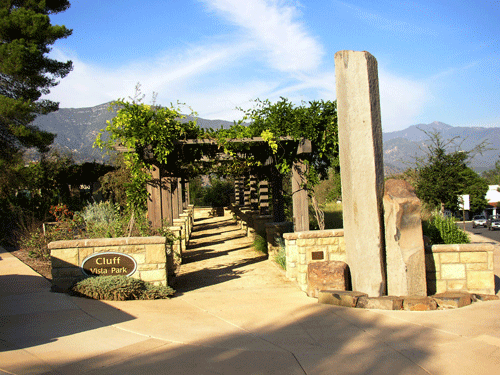
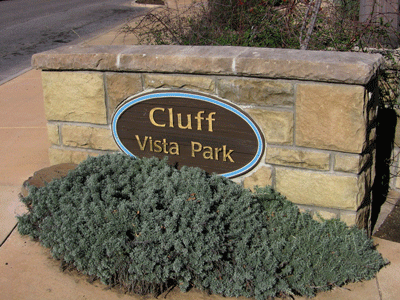
Here is a view of Cluff Vista Park from the second story of the office building on Rincon Street, with downtown Ojai and the Topatopa Bluffs in the background. The Allepo Pine (Pinus halepensis), a native of the Mediterranean region of Europe, was retained onsite from the landscaping that was planted in front of the now long-gone little cottages that once stood beneath it.
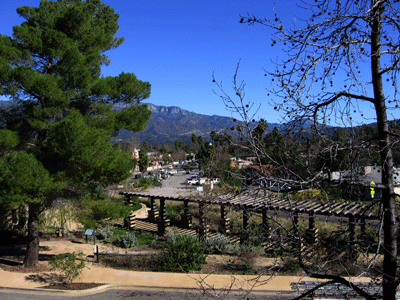
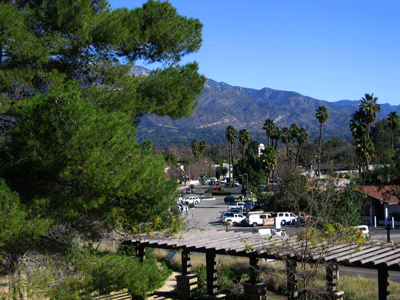
These are views of the center of the park, looking eastward, with Black Mountain prominant on the right side of the left photo, and Topatopa Bluffs in the far distance on the photo on the right. Santa Paula Peak can be seen behind the light pole on the right side in the distance on the photo on the right.
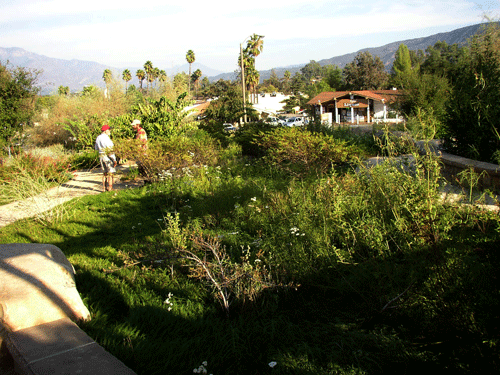

This is a view of the north side of the park, looking westward along El Paseo, with the eastern tip of the park centered by the old Valley Oak tree and the taller of the two Guardian Spirit pillars, this one with an onyx eye.
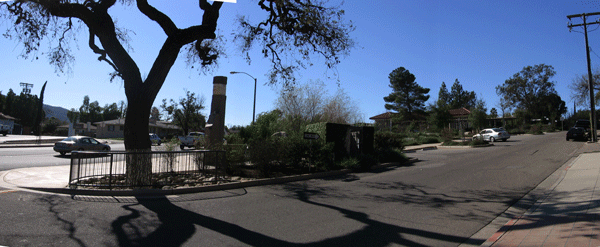
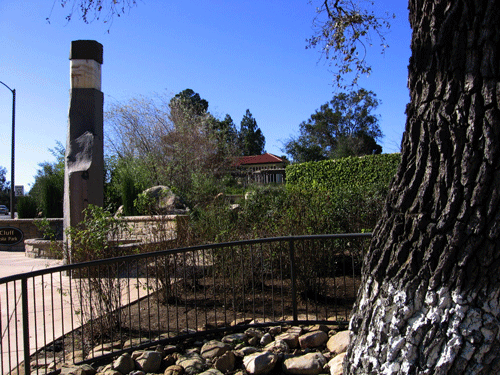
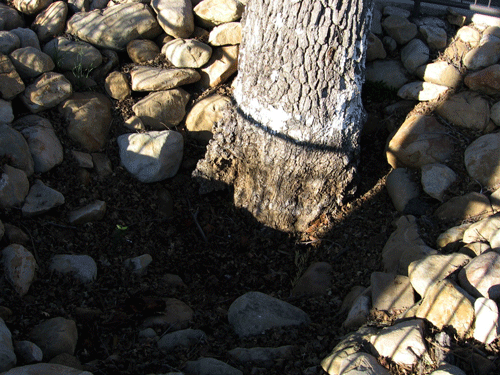
This is the south side of the park, along Ojai Avenue (State Route 150), and the eastern "Guardian Spirits".
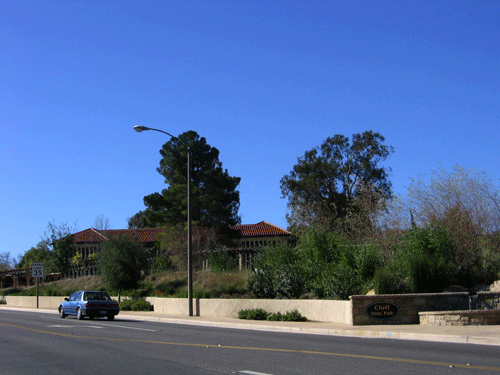
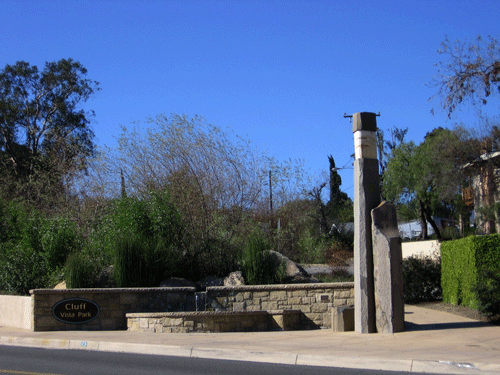
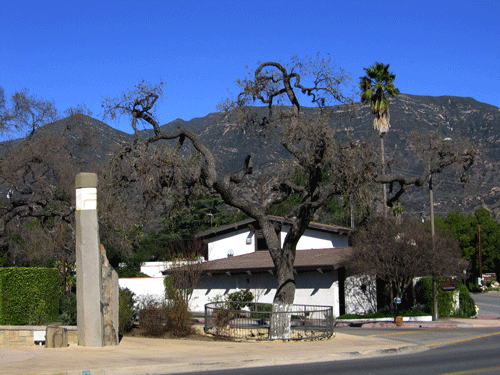
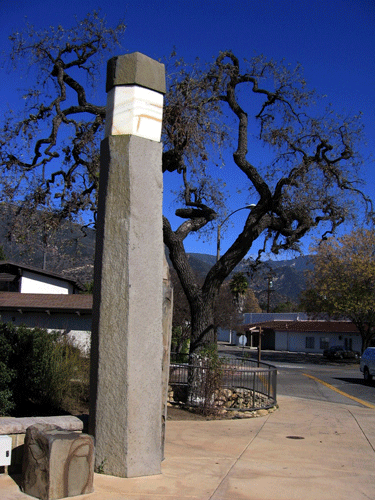
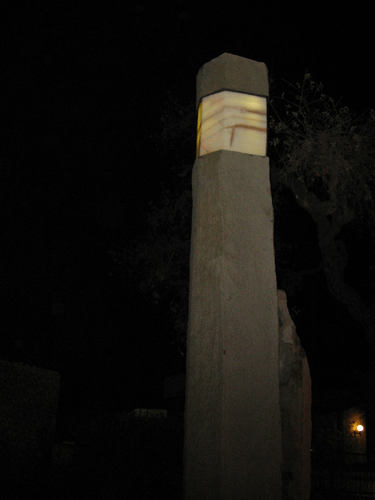
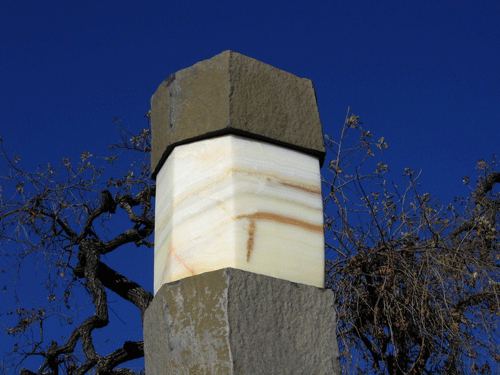
Donor Plaza is located at the northwest corner of the park, and formally recognizes all those patrons of this special park, which would not have come to fruition without out their generous support. From Donor Plaza you can see straight down Ojai Avenue to the Arcade.

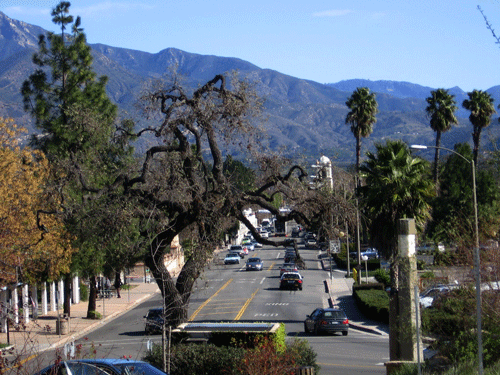

Overlook Circle
At the center of the park, in Overlook Circle, is a lovely circlular pond, representing the sun. The circle is also symbolic of the circle (and cycles) of life, which was so important to the native people, and all life.
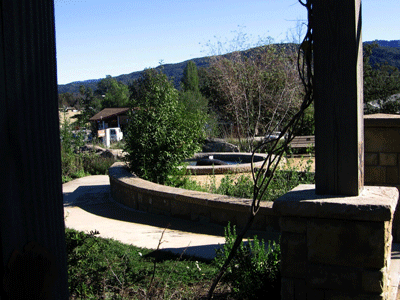
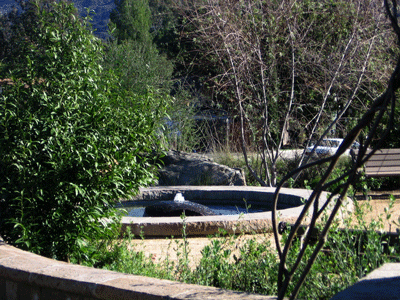
In the center of Overlook Circle is a large boulder. Etched onto this boulder is an explanation of the origin of the name "Ojai" and what prominant natural features can be seen from here. A bronze place on top of the boulder guides the viewer to the names and provides the heights of the prominant peaks eastward. Nordhoff Peak is located to the north and Chief Peak is found to the northeast. East-northeast are the Topatopa Bluffs, which are the most prominant cliff face overlooking the Ojai Valley. Nearly due east in the distance you can see Santa Paula Peak, and to the east-southeast, and closer in, is Black Mountain. Behind Black Mountain, and extending to the south is Sulphur Mountain. The bronze plaque provides the elevations of each of these peaks, but one of them has an error. Do you know which one has the incorrect elevation?
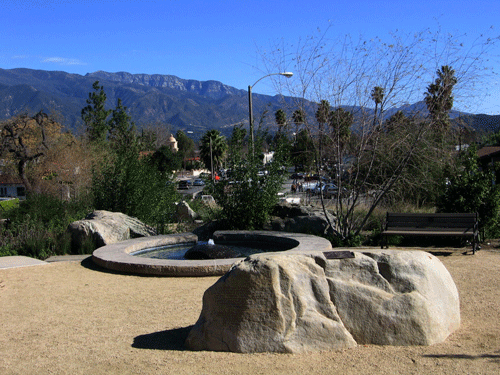
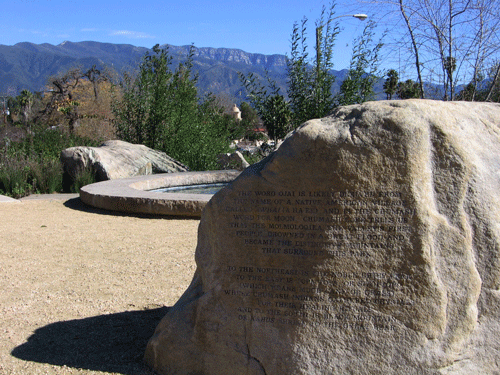
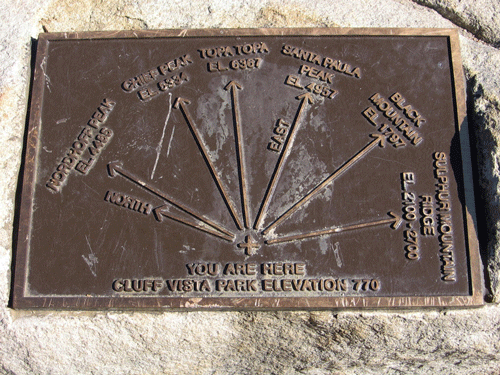
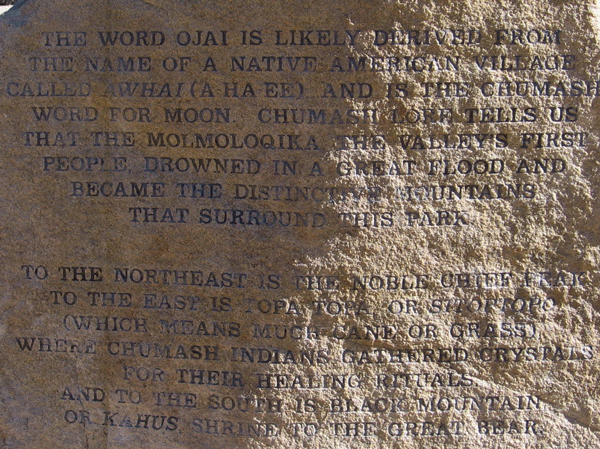
Interpretive signs for each of the theme gardens, which I consulted on, provide educational opportunities for park visitors and school children. Here are shown the Chaparral Garden & Deergrass Meadow, Butterfly and Hummingbird Garden, Riparian & Bird Garden, and the Woodland & Sage Scented Garden interpretive signs.
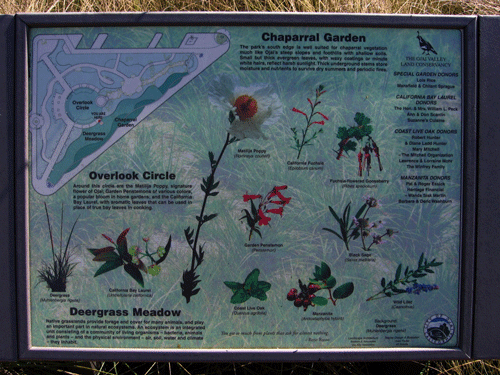
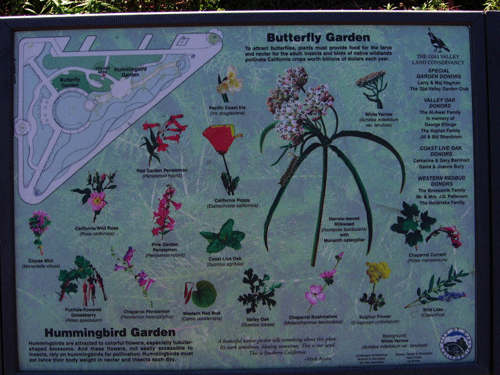
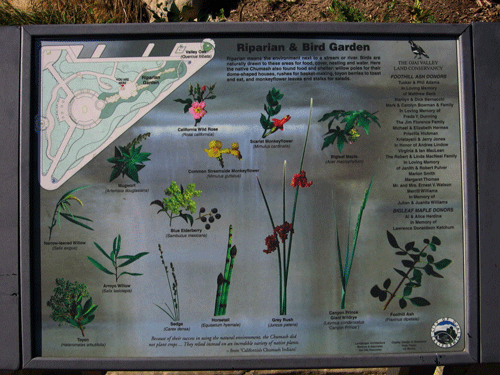
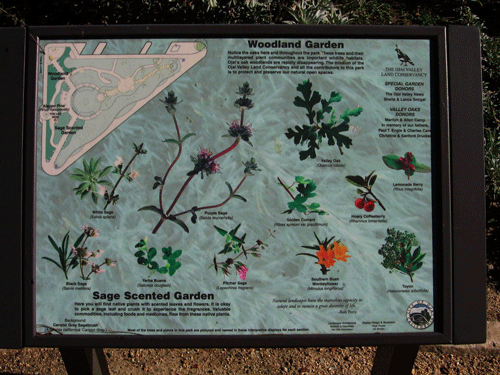
Here is a winter-time panorama view of 402 W. Ojai Avenue (actually facing Rincon Street) as seen from Cluff Vista Park, the building houses the offices of BioResource Consultants, and used to house David Magney Environmental Consulting and Bostrom & Associates. Notice that the trees (a Sweet Gum, Japanese Maple, and London Plane Tree) have lost their leaves for the winter. Notice the red berries in the foreground of the Toyon (Heteromeles salicifolia Abrams), also called Christmas Berry, growing in the park. This is the plant afterwhich "Hollywood" was named as the leaves look somewhat like holly, and Toyon grows abundantly in the Hollywood Hills (east end of the Santa Monica Mountains).
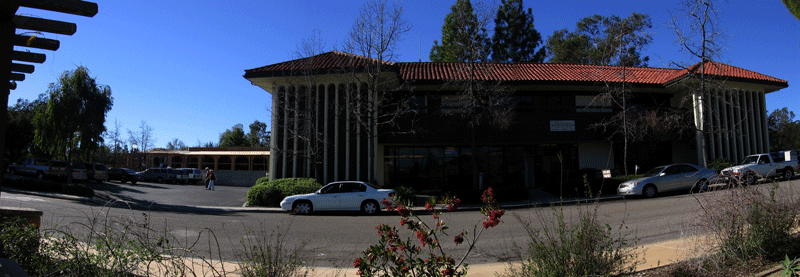
Next Page
Ojai Area Home
Magney's Photography/Biogeography Home Page
David Magney Environmental Consulting Home






























